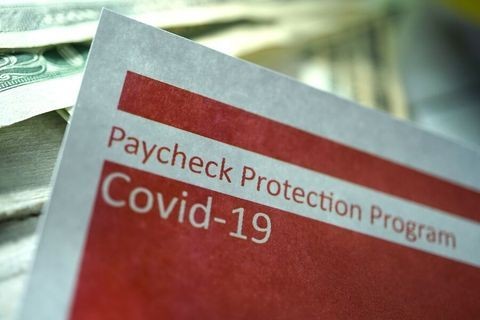E-Discovery – What is 'Proportional' in the Era of Expanding Data?
Publication | 01.09.18
[ARTICLE PDF]

Key Points
|
Burgeoning amounts of electronic data are presenting a range of challenges for companies responding to discovery and for courts that have to manage the discovery process. Several recent changes to the Federal Rules of Civil Procedure have tried to address these challenges, though the full impact of these changes is still being sorted out.
In 2015, Federal Rule of Civil Procedure 26(b)(1) was amended to state expressly that to be discoverable, information must be not only relevant, but “proportional” to the needs of the case. In weighing proportionality, courts are directed to consider the importance of the issues at stake, the amount in controversy, the parties’ relative access to the information, the parties’ resources, the importance of the discovery in resolving the issues, and whether the burden or expense of the proposed discovery outweighs its likely benefit.
“Proportionality tries to strike a balance between the needs of both parties,” says Crowell & Moring Litigation Group Partner Mike Lieberman. “In essence, it asks how much discovery makes sense in the context of this specific case. What is proportional in one case may very well not be proportional in another.”
Applying the proportionality standard, courts have taken varied approaches and reached different conclusions. In one case, a court denied as disproportionate discovery into a defendant’s communication with foreign regulators because the point of the discovery—to show inconsistency with the defendant’s similar communications with the U.S. regulator—was only marginally relevant and the burden to obtain the discovery was high. In another case, a court rejected as disproportionate a request for additional documents where the party had already produced other documents on the same topic.
On the other side of the coin, a court held that the fact that a company would have to look in multiple databases within multiple departments did not render a discovery request disproportionate. Another court applied the proportionality standard and similarly permitted discovery even though the target company would have to do a manual review of scattered electronic and hard copy files for roughly 2,000 people.
“The challenge for litigants,” says Lieberman, “is to show proportionality in a way that brings the concept to life for the judge.”

|
"The challenge for litigants is to show proportionality in a way that brings the concept to life for the judge." |
Parties resisting discovery often try to show a lack of proportionality through hard numbers. They will quantify for the judge the millions of dollars it would cost to review the documents sought. They will emphasize the thousands of documents they would have to search to find the handful of documents (if any) that really matter to the litigation. And they will highlight the discovery costs already incurred and how the new discovery would be cumulative of information already provided.
Parties seeking discovery often argue the potential impact of the information sought. They will talk about the importance of the discovery to the case and why the discovery is necessary for fair adjudication of the issues. They will highlight why the discovery is unique and distinct from other materials they already received. And they will downplay the costs of discovery by comparing them to the recovery sought, the size of the target companies, or the harm suffered by their clients.
“For the party seeking discovery, proportionality is about the risk of missing that one case-breaking document without which justice would not be done in the case,” says Lieberman. “For the party opposing discovery, proportionality is about a fishing expedition by their opponent, the costs of which are high and the benefits of which are low.
“The more concrete the parties make their arguments, the higher their chance of success,” he adds.
As the universe of searchable, discoverable data continues to grow, what it means to be “proportional” will be a primary frontier for discovery litigation.
THE CHANGING DYNAMICS OF SPOLIATION
Another significant change to the Federal Rules of Civil Procedure involved the rules around spoliation. Under prior iterations of the Federal Rules, companies risked claims for sanctions where the loss of documents was inadvertent.
“The plaintiffs’ bar in particular recognized the threat of spoliation as a leverage point and used this threat as a way to put settlement pressure on defendants,” notes Lieberman.
In 2015, Federal Rule of Civil Procedure 37(e) was amend- ed to clarify that spoliation sanctions are only permitted for loss of electronically stored information when a party failed to take reasonable steps to preserve. If a party suffered prejudice from the loss of information, the court may order measures no greater than necessary to cure the prejudice. More severe sanctions are reserved for when the party acted with intent to deprive another party of the information’s use in litigation.
“To be sure, parties still need to be careful to avoid spoliation, and the potential penalties under the rules are still severe,” says Lieberman. “But these rule changes lower the risk that an inadvertent loss of documents will break a case open for the other side.”
Courts are still defining what are reasonable steps to preserve, what is needed to show intent to deprive a party of information, and what sorts of cures are necessary to alleviate prejudice. Litigants, in turn, are only just beginning to adjust their tactics to these new requirements.
Lieberman is optimistic, though, that these rule changes will serve the interests of justice. As he notes, “These rule changes make it more likely the parties will have their case decided on the merits, rather than having the case derailed by discovery mistakes.”
STREAMLINING AUTHENTICATION OF ELECTRONIC DOCUMENTSIn December 2017, the Federal Rules of Evidence were amended to add two new categories of self- authenticating documents: (1) records generated by an electronic process or system that produces an accurate result—for example, structured data processed from a company database; and (2) records copied from an electronic device, storage medium, or file, if authenticated by a process of digital identification—for example, emails verified by hash values. To be self-authenticating, companies must support these documents with a declaration certifying that they are records of regularly conducted business activity. “These new rules bring the Rules of Evidence into the digital age,” says Crowell & Moring’s Mike Lieberman. “This should allow parties to authenticate large swaths of information without the need for IT teams to travel all over the country to offer authentication testimony. “This change should also impact how companies manage data,” Lieberman adds. “Now, if companies are careful in document collections on the front end, they can save themselves a lot of headache on the back end. Prudent companies should be putting systems in place that will let them take advantage of these new self-authentication opportunities and better manage their litigation costs in the process.” |
PDF Download
Web Flip Book
Click to access the flipbook.
- "Data, Data Everywhere – Positioning Your Company to Survive and Thrive in the Data Revolution." — Cheryl Falvey, Paul Rosen, Cari Stinebower, Ryan Tisch, and Kent Goss.
- "Antitrust – Main Street vs. Wall Street: Plaintiffs' Bar Continues To Come After Large Banks." — Juan Arteaga.
- "Environmental – Regulatory Rollback—And Pushback." — Kirsten Nathanson.
- "Government Contracts – Contractors: Getting Their Due." — Stephen McBrady.
- "Jurisdictional Analysis – Time to Trial, Favorable Courts & Other Litigation Trends." — Keith Harrison.
- "Intellectual Property – TC Heartland Reshapes the Patent Litigation Landscape." — Jim Stronski.
- "Labor and Employment – Pay Equity: The Shifting Landscape." — Trina Fairley Barlow.
- "Torts/Products – The New State Lottery: Litigation Rather Than Regulation." — Rick Wallace.
- "White Collar – Corporate Monitors: Peace, at What Cost?" — Philip Inglima.
- "E-Discovery – What is 'Proportional' in the Era of Expanding Data?" — Mike Lieberman.
- "Arbitration – Unlocking the Promise of Arbitration." — Aryeh Portnoy.
- "Health Care – FCA Enforcement: Different, But Still Here." — Laura Cordova.
- "IP: Copyright – 3D Printing Complicates Copyright." — Valerie Goo.
- "Tax – What Congress Giveth, the IRS Taketh Away." — Dwight Mersereau.
Insights
Publication | 03.31.25
Health System Settles FCA Case Over PPP Loan 03.31.25 Report on Medicare Compliance
Publication | 03.24.25



